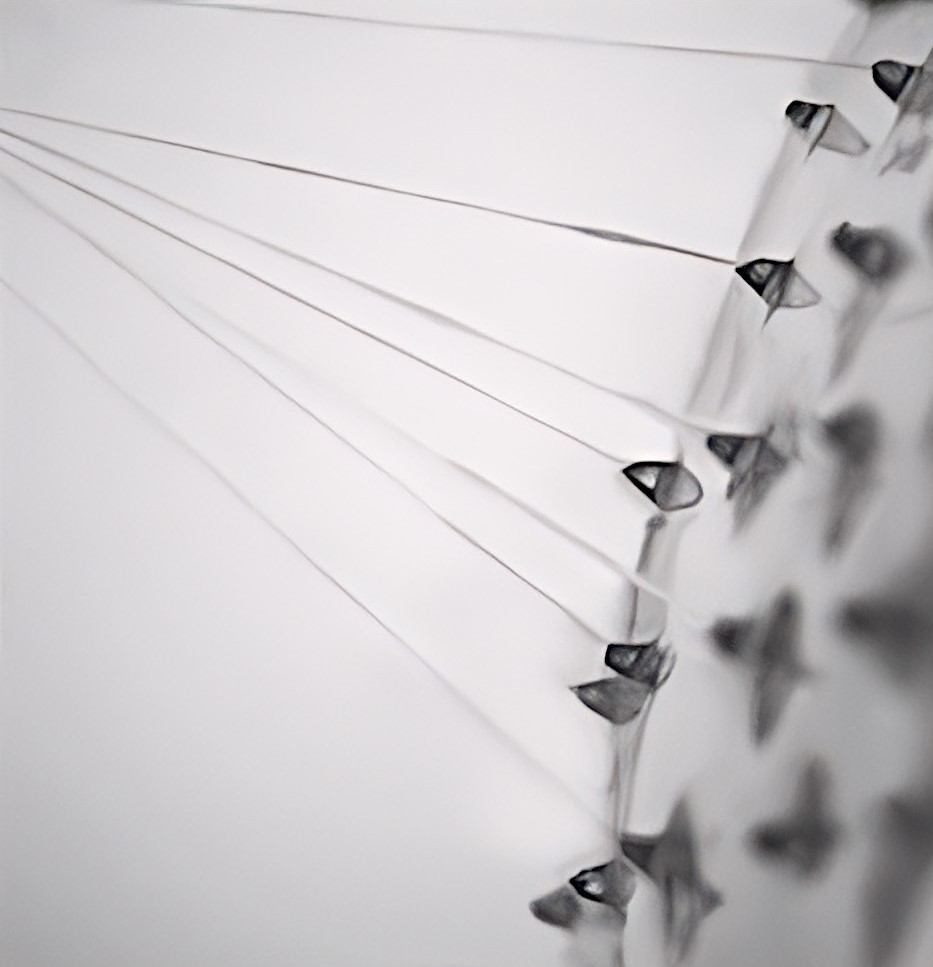Spider silk is one of the strongest materials on Earth, technically stronger than steel for a material of its size. However, it’s tough to obtain — spiders are too territorial (and cannibalistic!) to breed them like silkworms, leading scientists to turn to artificial options. Teaching microbes to produce the spider silk proteins through genetic engineering is one such option, but this has proved challenging because the proteins tend to stick together, reducing the silk’s yield. So, Bingbing Gao and colleagues wanted to modify the natural protein sequence to design an easily spinnable, yet still stable, spider silk using microbes.
The team first used these microbes to produce the silk proteins, adding extra peptides as well. The new peptides, following a pattern found in the protein sequence of amyloid polypeptides, helped the artificial silk proteins form an orderly structure when folded and prevented them from sticking together in solution, increasing their yield. Then, using an array of tiny, hollow needles attached to the nozzle of a 3D printer, the researchers drew the protein solution into thin strands in the air and spun them together into a thicker fiber. This setup acted like a giant artificial spider spinning its web.
They then wove their artificial silk fibers into prototype wound dressings that they applied on mice with osteoarthritis (a degenerative joint disease) and chronic wounds caused by diabetes. Drug treatments were easily added to the dressings, and the team found these modified dressings boosted wound healing better than traditional bandages. Compared with a control group with neutral dressings, mice with osteoarthritis showed decreased swelling and repaired tissue structure after 2 weeks of treatment, while diabetic mice with skin lesions treated with a similar dressing showed significant wound healing after 16 days of treatment. The new silken bandages are biocompatible and biodegradable, and the researchers say that they show promise for future applications in medicine.
The authors acknowledge funding from the National Key R & D Program of China, the National Natural Science Foundation of China, the Postgraduate Research & Practice Innovation Program of Jiangsu Province, the Nanjing Tech University Teaching Reform Project, the Discipline Fund of Nanjing Tech University School of Pharmaceutical Sciences, and the Cultivation Program for The Excellent Doctoral Dissertation of Nanjing Tech University.
###
The American Chemical Society (ACS) is a nonprofit organization chartered by the U.S. Congress. ACS’ mission is to advance the broader chemistry enterprise and its practitioners for the benefit of Earth and all its people. The Society is a global leader in promoting excellence in science education and providing access to chemistry-related information and research through its multiple research solutions, peer-reviewed journals, scientific conferences, e-books and weekly news periodical Chemical & Engineering News. ACS journals are among the most cited, most trusted and most read within the scientific literature; however, ACS itself does not conduct chemical research. As a leader in scientific information solutions, its CAS division partners with global innovators to accelerate breakthroughs by curating, connecting and analyzing the world’s scientific knowledge. ACS’ main offices are in Washington, D.C., and Columbus, Ohio.
Registered journalists can subscribe to the ACS journalist news portal on EurekAlert! to access embargoed and public science press releases. For media inquiries, contact [email protected].
Note: ACS does not conduct research but publishes and publicizes peer-reviewed scientific studies.
Follow us: X, formerly Twitter | Facebook | LinkedIn | Instagram


